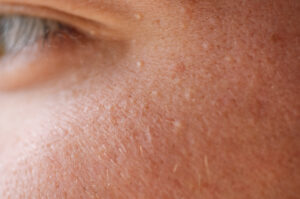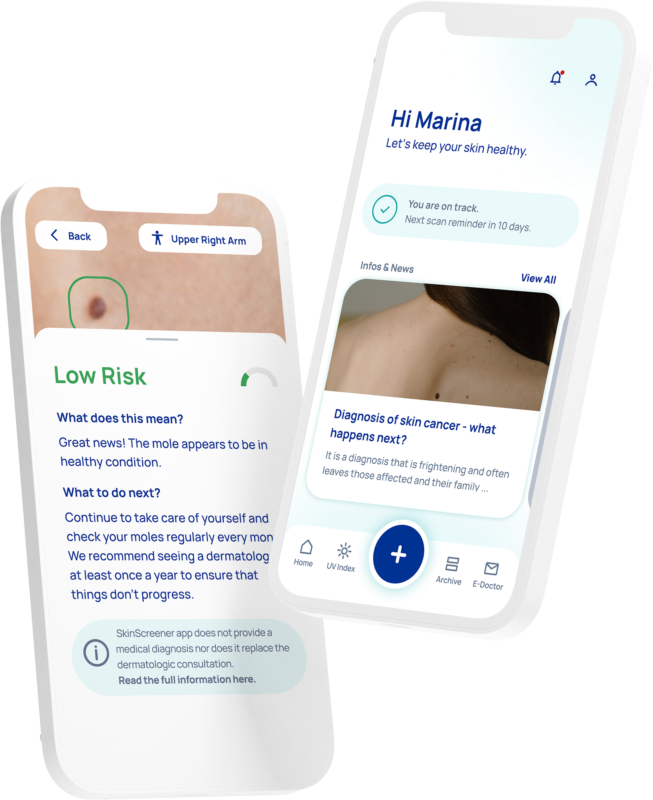The skin cancer category of non-malignant skin cancer covers various skin tumours with different characteristics. In this series of blog articles, we will look at three different types of carcinomas. The most common forms of carcinomas include basal cell carcinoma, squamous cell carcinoma and various skin cancer precursors such as actinic keratosis. This blog post is about basal cell carcinoma.
Basal cell carcinoma occurs much more frequently than malignant melanoma. However, it very rarely metastasises and is therefore almost always curable if detected early.
The Basal Cell Carcinoma
Basal cell carcinoma is one of the most common skin tumors. It originates in the basal cells of the upper skin layer (epidermis) and is most common in sun-exposed areas.
In 80 % of cases, it occurs in the area of the head and neck, here especially on the nose and lower lip, on the neck and hands, but also the torso and limbs can be affected.
There is no preliminary stage of basal cell carcinoma. Even the first small change is a cancerous growth that should be removed. If this is not done, it can grow into a really large tumor that both expands in area and enters deep into the tissue.
Basal cell carcinomas often develop on the sun terraces of the body (forehead/ bald head, ears, eyes, bridge of nose, lips, chin, shoulders, back, breasts, buttocks, arch of the foot).
Basal cell carcinoma can appear at very different forms. At first, it looks like a small, porcelain-like pimple with tiny blood vessels visible on its surface. Later, the surface of these skin entities sinks in the middle. A hollow with a wall-like edge develops. The bottom of this hollow is covered with crusts and may bleed from time to time. The rim is streaked with small vessels.
The chances of cure are better the earlier the basal cell carcinoma is detected. It is important that you see a dermatologist once a year for a professional skin examination.
If you notice a skin change, pimple or mole that looks suspicious, contact your dermatologist immediately and have it checked. Early detection of skin cancer plays a key role.







